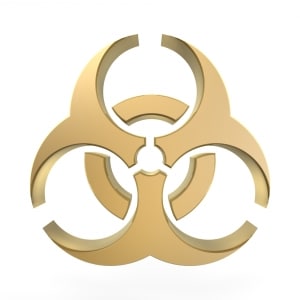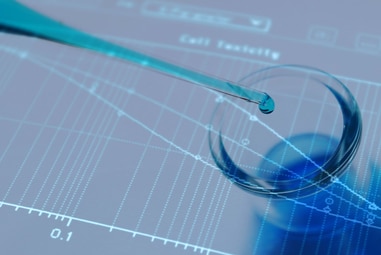The 2018 Global Security Market for Analytical Instrumentation
Although analytical instrumentation has long been utilized in forensic, safety, and security applications, it is fair to say that governments, military forces, first responders, transportation facilities, industrial facilities, and even the general public have increasingly turned to science and instrumentation as a way to identify and/or mitigate threats.
In our latest report, The 2018 Global Security Market for Analytical Instrumentation, Strategic Directions International (a division of BioInformatics LLC) has put together a comprehensive picture of the market for analytical instrumentation in security applications, from market size and share to the growth drivers and strategic issues that are affecting the marketplace.
This article discusses the nature of the threats covered in the report and an overview of the technologies used to detect their presence.
The full report is available for purchase at our website and provides the market size and growth for each class of instrumentation used for security applications with growth projections out to 2021. All market size information is also presented by region and customer application.
Radiological/Nuclear Threats

Detecting Nuclear and Radiological Threats
Preventing a nuclear/radiological attack is highly dependent on first detecting the threat. Traditionally, radiation detection methods have been employed on-site at nuclear weapons facilities covered by international treaties or using stand-off systems to detect emissions that come from the processing of nuclear materials. However, the specter of a so-called “dirty bomb” makes virtually any radioactive material a potential threat and vastly changes the number of environments in which the materials may be accessed, stored or transported. This factor is an important driver of demand for portable systems that combine fast throughput, elemental/isotopic discrimination and lower cost for use in the field.
Devices that detect alpha, beta, or gamma emissions of constituent isotopes are widely available. The development of more compact components has enabled this technology to be more widely used. Applications for personal monitoring, cargo inspection, gate monitoring and field use constantly demand ever more sensitivity, greater spatial resolution, and room temperature compatible detectors.
Mass spectrometry is also widely used for isotope analysis. With sensitivity down to tens of atoms with nanometer spatial resolution, mass spectrometry-based techniques can be invaluable in tracing the origin of radioactive materials for forensic or investigative purposes.
Recent developments in the segment include advanced radiation detector systems that offer room temperature operation with high-energy resolution for gamma-ray detectors, imaging and direction-indicating capabilities for both gamma ray and neutron detectors, and sensitive, low-power Application-Specific Integrated Circuits (ASICs) for signal processing.
Radiation detection is the largest individual technology segment covered in our report, with broad applications in security, industrial safety in nuclear power stations and nuclear medicine, and nuclear weapons monitoring. These technologies are expected to grow by over 5% during the next five years.
Chemical Threats

Toxic industrial chemicals are produced in great quantities and their inadvertent or intentional release can do great harm. Toxic industrial chemicals are defined by the US Occupational & Safety Administration as “industrial chemicals that are manufactured, stored, transported, and used throughout the world. Toxic industrial chemicals can be in the gas, liquid, or solid state. They can be chemical hazards (e.g., carcinogens, reproductive hazards, corrosives, or agents that affect the lungs or blood) or physical hazards (e.g., flammable, combustible, explosive, or reactive).”
Finally, explosive materials are reactive compounds that rapidly release stored chemical energy. Common examples include nitroglycerin, TNT, and PETN. Although explosives have many legitimate uses, their use as weapons is quite common and they pose an obvious threat to security.
Detecting Chemical Threats
The fast and specific detection of the presence of chemical weapons or toxic industrial chemicals is of critical importance in both military and public safety environments. The speed of the detection permits the use of protective counter-measures and quickly identifying the agent facilitates effective treatment of the victims.
Analytical chemistry techniques are incorporated into devices used to detect chemical warfare agents and TICs. These include colorimetric, flame photometry, infrared spectroscopy, ion mobility spectroscopy, photo ionization and flame ionization, Raman spectroscopy, and surface acoustic wave. Each of these techniques has strengths and weaknesses in terms of their selectivity, sensitivity, response time, and false positives. The detector must be able to respond selectively to the target chemicals in a sample. Sensitivity is defined by the lowest concentration of a chemical that can be detected with confidence. The time it takes a detector to collect and analyze a sample, determine if an agent is present, and report the results also varies by the technique used. IMS-based detectors are the most commonly deployed detectors for chemical monitoring by the military for chemical warfare agents and increasingly by public safety officials monitoring for TICs.
There are two different scenarios for detecting explosives – bulk explosives and/or trace detection. Imaging technologies are used to spot shapes associated with detonators, wires, and explosive charges while analytical chemistry techniques detect the chemical composition or dielectric properties of the explosive material. Trace detection picks up vapors emitted from explosive material or by identifying particulates of the explosive found on surfaces. Most trace detectors today are based on IMS.
The threat of hostile use of explosives against both military and civilian targets is always evolving. New explosive materials are being developed to evade detection and the means by which the explosive device is camouflaged and delivered to its target are always changing. The technologies which are used for detecting either chemical warfare agents or explosives are judged not only on their technical performance such as selectivity and sensitivity but also on the detector’s price, total cost of ownership, frequency of calibration, ease-of-use, portability, power consumption, and ruggedization to name just a few considerations. Manufacturers in this segment must be extremely responsive to changing customer needs as a result of ever-changing threats.
Chemical sensors constitute the second largest market covered in our report, with broad applications in security and industrial safety for detecting chemical threats. Ion mobility spectroscopy (IMS) also detects chemical threats, but is more commonly found in military and aviation applications.
Biological Threats

Detecting Biological Threats
Public health surveillance of disease outbreaks has relied on case reporting by health care professionals and lab tests reported to public health officials. This means the identification of biological agents can take days or even weeks before an attack is even recognized which could lead to very high mortality rates. This is complicated further by the fact that microbes evolve constantly (e.g. drug resistant bacteria), and it may be difficult to distinguish between a naturally emerging epidemic and an actual terrorist attack depending on how the pathogen or agent is distributed.
The primary laboratory techniques used to identify biological agents are the same as those used in routine clinical diagnostics including a combination of various molecular/microbiological based platforms. These include antibody-based immunoassays, microbiological culturing, PCR to look for presence of specific genes and increasingly, mass spectrometry. Oftentimes combinations of techniques are used to achieve a more precise result. There has been a great deal of effort invested in the development of biosensors that employ a combination of antibodies, genomic analysis, biochemical testing, and other cellular based responses into an integrated platform or network of sensors for biodefense applications. Microfluidics and microfabrication are propelling the development of “lab on a chip” strategies that make possible the development of sensors that are field portable or can be mounted on fixed sites or vehicles. As with the chemical detection approaches described above, sensitivity, specificity, reliability, time to results, and cost must be taken into account by customers. Detecting biological agents in somewhat more complex than chemical agents due to the different pathology, etiology, physiochemical, and structural properties of pathogens that must be considered.
The biological detection segment is the slowest growing of the markets covered in our report due to the fortunate rarity of bioterrorism events and growing complacency. However, there is also room for improvement in these technologies for rapid and accurate identification of pathogens in the field.
Instrument manufacturers are using this report to plan for 2018 by spotting opportunities for growth and understanding competitive positioning within this large international market. Seven major technology categories are explored in detail:
- Chemical Sensors (e.g., Gas Chromatography)
- Ion Mobility
- Mass Spectrometry (e.g., GC/MS)
- Other Biochemical Technologies (e.g., ELISAs)
- PCR
- Radiation Detection.
- Spectrometry
- Spectroscopy (e.g., IR, NIR, FTIR, Raman)
Market demand estimates for these techniques are presented for their total associated annual revenues from initial system sales, aftermarket purchases and service. The utilization of these technologies is explored across ten different end markets, including aviation, cargo & shipping, the military, and first responders. Please download the Executive Summary and Table of Contents.






It’s so interesting that analytical instrumentation can be used in forensic, safety, and security forces on the national level as well as the private business level. What really caught my eye was that you can detect chemical threats if you have the right instruments and training. I wonder where you can receive analytical instrument training.